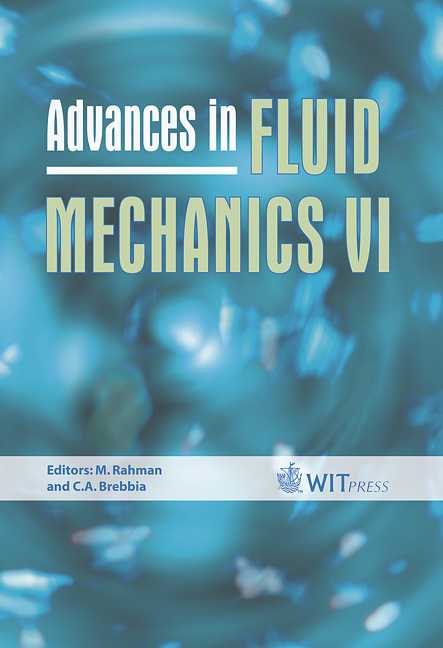Velocity Vorticity-based Large Eddy Simulation With The Boundary Element Method
Price
Free (open access)
Transaction
Volume
52
Pages
10
Published
2006
Size
971 kb
Paper DOI
10.2495/AFM060271
Copyright
WIT Press
Author(s)
J. Ravnik, L. ˇSkerget & M. Hriberˇsek
Abstract
A large eddy simulation using velocity-vorticity formulation of the incompressible Navier-Stokes equations in combination with the turbulent heat transfer equation is proposed for the solution of the turbulent natural convection drive flow in a 1:4 enclosure. The system of equations is closed by an enstrophy based subgrid scale model. The Prandtl turbulent number is used to estimate turbulent diffusion in the heat transfer equation. The boundary element method is used to solve the kinematics equation and estimate the boundary vorticity values. The vorticity transport equation is solved by the finite element method. The numerical example investigated in the paper is the onset of a turbulent flow regime occurring at high Rayleigh number values (Ra = 107−1010). The formation of vortices in the boundary layer is observed, along with buoyancy driven diffusive convective transport. Quantitative comparison with the laminar flow model and the work of other authors is also presented in terms of Nusselt number value oscillations. 1 Introduction Over the last few decades two-dimensional buoyancy driven flows have been investigated thoroughly by several authors. Natural convection in a rectangular enclosure is present in many industrial applications, such as the cooling of electronic circuitry, nuclear reactor insulation and ventilation of rooms. A benchmark solution for two-dimensional flow of Boussinesq fluid in a square differentially heated enclosure was presented by De Vahl Davies [1]. They used the stream function-vorticity formulation. 2D DNS was preformed by Xin and Le Qu´er´e [2] for an enclosure with aspect ratio 4 up to Rayleigh number based on the enclosure height 1010 using expansions in series of Chebyshev polynomials.
Keywords





